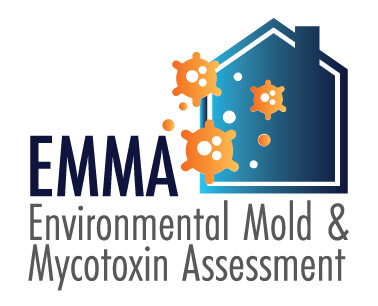How Mycotoxin Screening Assists Avoid Contamination and Secure Food Materials

Mycotoxin screening is a crucial practice in the food market, offering as a frontline defense against contamination by harmful toxic substances generated by molds. Via the application of sophisticated methods like High-Performance Fluid Chromatography (HPLC) and Fluid Chromatography-Mass Spectrometry (LC-MS), food producers can precisely evaluate and identify mycotoxin levels in agricultural products.
Recognizing Mycotoxins
Comprehending mycotoxins starts with identifying that they are hazardous second metabolites generated by particular mold and mildews, which can infect farming products. These metabolites are not necessary for the development or reproduction of the fungis but can have extreme implications for human and animal health. Mycotoxins are commonly located in staple plants such as corn, wheat, barley, and nuts, where they can multiply under certain problems of wetness and temperature.
There are numerous kinds of mycotoxins, each produced by different fungal varieties. Fusarium varieties generate trichothecenes and fumonisins, both of which are associated with numerous acute and persistent health and wellness issues.

Risks of Mycotoxin Contamination
The dangers of mycotoxin contamination are multifaceted, posturing substantial dangers to both food safety and security and public health and wellness. Mycotoxins, toxic substances produced by specific kinds of fungi, can infect a large range of agricultural items including grains, nuts, flavors, dried out fruits, and coffee.
Economic influences are an additional major problem. Contaminated plants can result in substantial economic losses for farmers and food producers because of lowered yields and the demand for costly purification measures. In addition, international profession can be substantially hindered as countries apply strict mycotoxin guidelines to shield their populations, causing rejected shipments and strained profession relationships.
Ecological aspects such as climate adjustment intensify the threat of mycotoxin contamination. Variations in temperature and humidity can produce desirable conditions for fungal growth, raising the likelihood of contamination events. Thus, understanding and reducing these dangers are vital for ensuring the safety and integrity of global food products.
Approaches of Mycotoxin Evaluating
Accurately identifying mycotoxin contamination in agricultural products is essential for safeguarding public health and maintaining food safety and security criteria. Numerous approaches are utilized to find and measure mycotoxins, each offering certain advantages and limitations.
High-Performance Fluid Chromatography (HPLC) is an extensively made use of technique due to its high sensitivity and accuracy. It involves separating mycotoxins from various other materials in an example, allowing accurate metrology. In A Similar Way, Liquid try here Chromatography-Mass Spectrometry (LC-MS) combines fluid chromatography with mass spectrometry to give thorough molecular details, making it especially useful for recognizing several mycotoxins concurrently - Mycotoxin testing Services.

Gas Chromatography-Mass Spectrometry (GC-MS) and Thin-Layer Chromatography (TLC) are also used, each with one-of-a-kind applications. GC-MS is effective for volatile mycotoxins, while tender loving care offers a less complex, cost-efficient choice for initial screening.
Benefits of Regular Examining
Normal screening for mycotoxins in farming products supplies various benefits, substantially contributing to public health and wellness and food safety. By identifying contamination early, normal testing helps prevent the circulation of harmful foods, thereby reducing the threat of mycotoxin-related ailments among consumers. This aggressive method not only safeguards human wellness however also boosts the overall top quality of food materials.
Different countries and areas have developed rigorous limits for mycotoxin degrees in food and feed. Sticking to these limits with normal screening ensures that suppliers i was reading this and producers satisfy lawful standards, thereby staying clear of penalties and profession obstacles.
Additionally, regular mycotoxin screening can result in considerable financial advantages. Early detection of contamination permits timely intervention, decreasing possible losses from prevalent contamination. Implementing regular testing protocols can also reduce recall expenses and associated liabilities, which can be economically ravaging.
Moreover, routine screening supplies useful information that can notify much better farming methods and storage conditions. By understanding patterns of contamination, manufacturers can embrace safety nets, therefore adding and lowering future threats to the sustainability of the food supply chain.
Carrying Out Checking Procedures
Applying efficient mycotoxin screening procedures is essential for ensuring the safety and security and high quality of agricultural products. Each stage should be scrutinized to determine where mycotoxin contamination is most likely to happen.
Once critical control factors are identified, choosing appropriate screening methods is vital. Common methods consist of enzyme-linked immunosorbent assay (ELISA), high-performance liquid chromatography (HPLC), and mass spectrometry (MS) Each approach has its staminas and weak points; hence, selecting the proper one depends on the details mycotoxin being tested, the needed sensitivity, and offered sources.

Lastly, incorporating the testing methods into an extensive food safety and security administration system is recommended. This boosts traceability and allows speedy restorative activities when contamination is discovered, thereby securing the integrity of the food supply chain.
Verdict
Mycotoxin testing is essential in protecting against contamination and safeguarding food materials by allowing very early detection of unsafe toxic substances produced by molds in farming items. Regular screening improves brand web link name online reputation, monetary security, and depend on in food safety and security by reducing contamination-related losses and preserving high requirements in food production.
Mycotoxin testing is a vital technique in the food sector, offering as a frontline protection against contamination by damaging toxic substances created by molds. An integrated approach involving farming techniques, storage space administration, and regular testing can minimize the threats linked with mycotoxin contamination, making sure food security and public health.
The risks of mycotoxin contamination are complex, posturing significant risks to both food safety and public wellness.Normal testing for mycotoxins in agricultural items uses various advantages, dramatically adding to public health and food safety and security.Mycotoxin screening is necessary in stopping contamination and protecting food supplies by making it possible for early discovery of dangerous toxins generated by molds in farming items.